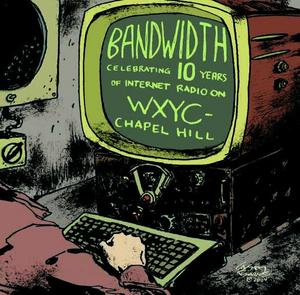 Ever wonder how the copyright licensing works for Internet Radio stations? I was reading the 10-K of a radio station with simulcast Internet radio, and I got hooked. ;)
This intro covers the basic licensing (ASCAP, BMI, SESAC) while wikipedia lists the future rate increases. The lucid legal reference describes the arguments heard and the rationale used.
Ever wonder how the copyright licensing works for Internet Radio stations? I was reading the 10-K of a radio station with simulcast Internet radio, and I got hooked. ;)
This intro covers the basic licensing (ASCAP, BMI, SESAC) while wikipedia lists the future rate increases. The lucid legal reference describes the arguments heard and the rationale used.
Unfortunately for Internet Radio fans, the Copyright Royalty Board (CRB) must follow the Digital Millenium Copyright Act which insists that the rates be determined by a "Willing Buyer/Willing Seller" standard. I.e. the CRB must model this fictional market in order to determine the market's price.
First, the CRB has to choose how many buyers and sellers will exist in this market: One seller (monopoly), some sellers (oligopoly), or lots of sellers (perfect competition) (tech note: no one argues about the number of buyers, all assume a larger number relative to the number of sellers, so no oligopsony worries).
The sellers (Royaltists?) argued that an appropriate model lies in assessing current transactions of rights (movie score, tv ad, itunes download, etc.) and deducting a guessed non-interactivity premium. The buyers (Privateers?) claim that analysis has selection bias in that it only reflects a subset of the available catalog (most likely the 'hott' songs). To which the Royaltists rejoin "umm, perhaps?". Check it out (Dr. Jaffe = Privateer, Dr. Pelcovits = Royaltist):
Dr. Jaffe's critique fails in its search for persuasive evidence. For example, Dr. Jaffe complains
that the interactivity adjustment made by Dr. Pelcovits is based on incorrect and internally
inconsistent assumptions, i.e., the assumption that "elasticity at market equilibrium is the same
for interactive services and non-interactive services." Jaffe WRT at 17. First, it should be noted
that even if Dr. Jaffe's complaint were supported by the record, it would not eliminate the
interactive webcasting market as an appropriate benchmark. As Dr. Pelcovits correctly notes, "if
demand elasticity were to differ significantly between the two markets, it could increase the
copyright fee or decrease it." Pelcovits WRT at 36 n.14.
-- page 38 of CRB finding
After 40 pages, the CRB found for the Royaltist's model. In doing so, they failed to acknowledge the possibility of non-representation bias. I.e. the hearing was between Royaltists and Privateers, but the Royaltist side
only represented large copyright holders, which have an interest in promoting monopoly/small oligopoly pricing in order to freeze out small rights holders like independent labels (thereby raising search costs of finding new non-mainstream music, so less people will choose to do so).
Ultimately, the rate increases will provide feedback as we will see whether Internet Radio survives. Granted, the CRB could just choose to ignore that, too.
 Ever wonder how the copyright licensing works for Internet Radio stations? I was reading the 10-K of a radio station with simulcast Internet radio, and I got hooked. ;)
This intro covers the basic licensing (ASCAP, BMI, SESAC) while wikipedia lists the future rate increases. The lucid legal reference describes the arguments heard and the rationale used.
Ever wonder how the copyright licensing works for Internet Radio stations? I was reading the 10-K of a radio station with simulcast Internet radio, and I got hooked. ;)
This intro covers the basic licensing (ASCAP, BMI, SESAC) while wikipedia lists the future rate increases. The lucid legal reference describes the arguments heard and the rationale used.